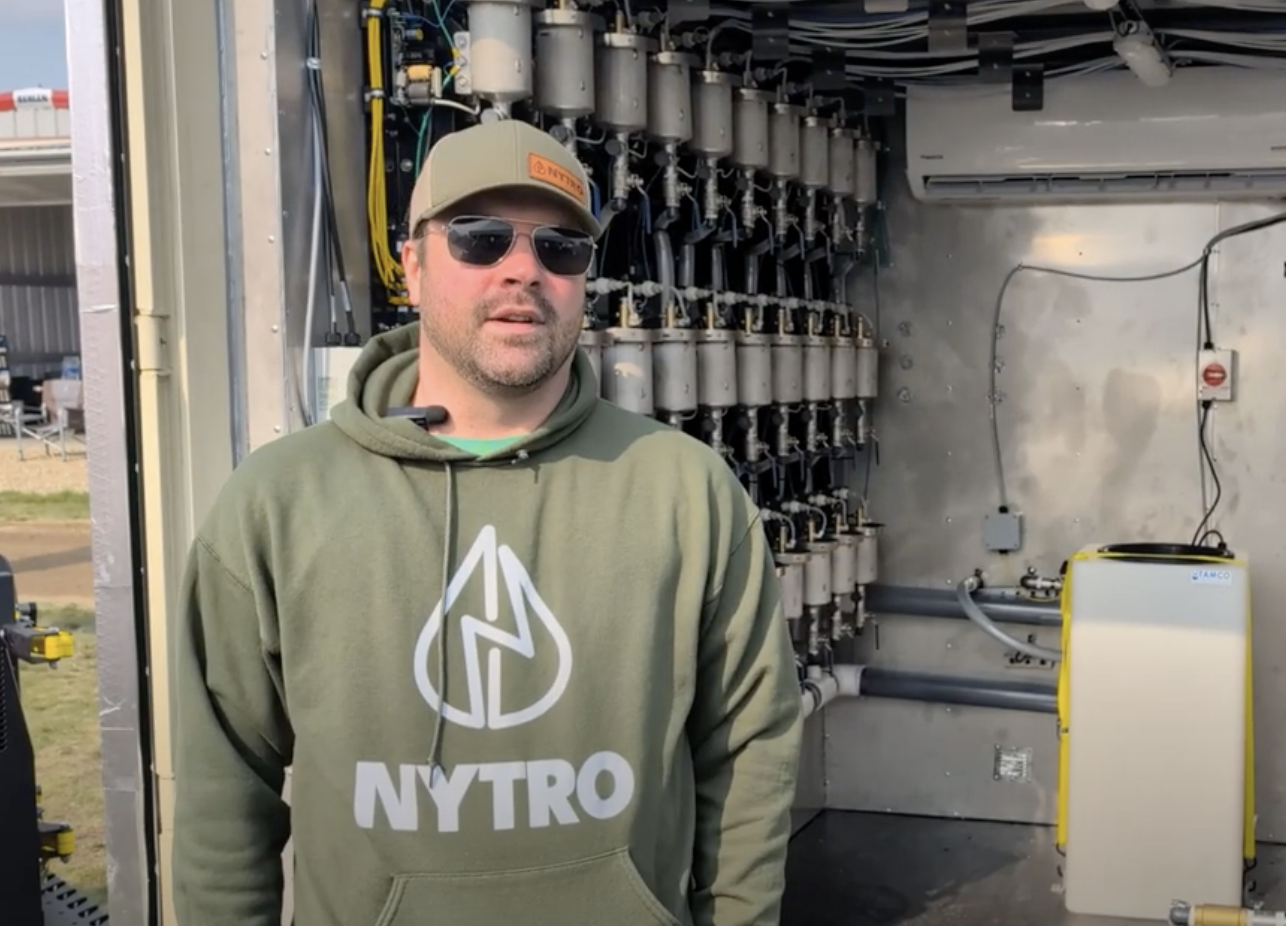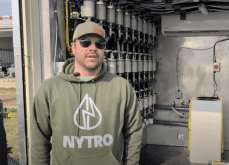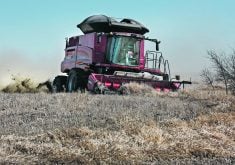FARGO, N.D. – An in-ground grain pit can be a handy thing to have at harvest time, especially if it’s automated so you can just dump and get back to the field.
Ryan Jackson from Lowry, Minnesota, has been building and selling Lowry DumPits for 25 years. He says once a farmer goes through his first harvest with one of these in-ground steel grain pits, it’s tough to convince him to do without.
Jackson says convenience, speed and efficiency improve even more when the pit is managed by an auto shutoff system that turns off the auger once the grain has been transferred into above-ground bins.
Read Also

VIDEO: Green Lightning and Nytro Ag win sustainability innovation award
Nytro Ag Corp and Green Lightning recieved an innovation award at Ag in Motion 2025 for the Green Lightning Nitrogen Machine, which converts atmospheric nitrogen into a plant-usable form.
“The electric shutoff is very basic,” says Jackson.
“If we’ve put a motor on your auger that runs at 30 amps under full load, the sensors know when the load gets lighter.
“All it takes is a 10 percent reduction in the load to shut down the auger.
“That means you just dump your grain, push the button to start the motor, and then go back to get another load. When the pit is empty, the auger stops automatically.”
Jackson says Lowry builds pits starting in size at 22 bushels with an eight-inch auger that moves 2,000 bu. per hour.
Near the top end of the scale, they have a 650 bu. pit with a 16-inch auger that moves 7,000 bu. per hour. Some farmers order the pit with twin augers to double the capacity.
As well, he says twin pits are becoming more popular with farmers who regularly use semis in their fields.
“They install two pits spread 15 feet apart, and then angle the augers so they unload both traps under the semi at the same time.
“That’s very handy, especially when it’s got the auto shutoff. They just dump the whole semi all at once and then get headed back to the field right away.
“We timed one guy with a super B dumping into twin pits, and he took just two and a half minutes. So it’s reasonable to be in and out of there in less than five minutes without running or speed walking.”
They have also installed a 1,000 bushel custom-designed DumPit that had a 10 foot by 24 foot opening to accept the full load from semis.
Taken to the extreme, twin 650- bu. pits with twin 16-inch augers spaced out for two traps under a semi adds up to 28,000 bu. per hour.
Jackson says Lowry started building DumPits in 1984, but most of them just sat around for a year or two. He says people just didn’t seem to catch on.
“Then a year or two later when farmers started to see how handy these pits can be, they just took right off. Ever since, we’ve been selling 125 to 130 DumPits each year.”
He says installation is easy. No pilings are required.
“You dig your hole in the ground. Set the DumPit exactly where you want it and make sure you get your co-ordinates right. Then you put R-bar over the leg stands and cement the leg stands into place.
“Next you backfill with pea rock or good washed gravel because it’s critical that you have a good drain field. Then you cement over the top for easy cleanup and that’s it. It should last a long time.”
He says they had one DumPit out of the ground last year because the customer wanted to replace original eight-inch auger with a 12-inch auger.
“It had been in the ground 15 years, and it was in pretty good condition. It had a few little pit holes, but we fixed them up and re-coated the whole thing. It’ll be good for a long time to come.”
Depending on the size of the DumPit, Lowry now uses 12 gauge and 10 gauge steel. The original units were all 12 gauge, but they decided they needed something a little heavier. They also have optional seven-gauge steel for the hopper on some larger models.
Prices range from $7,000 US for a 22 bu. pit with a 10 inch auger, up to $22,000 for the 650- bu. pit with a 10 inch auger. The 16 inch auger and the twin augers add to the cost.
Lowry is in west-central Minnesota.
For more information, contact Ryan Jackson at 320-283-5450 or visit www.lowrymfgco.com.

















